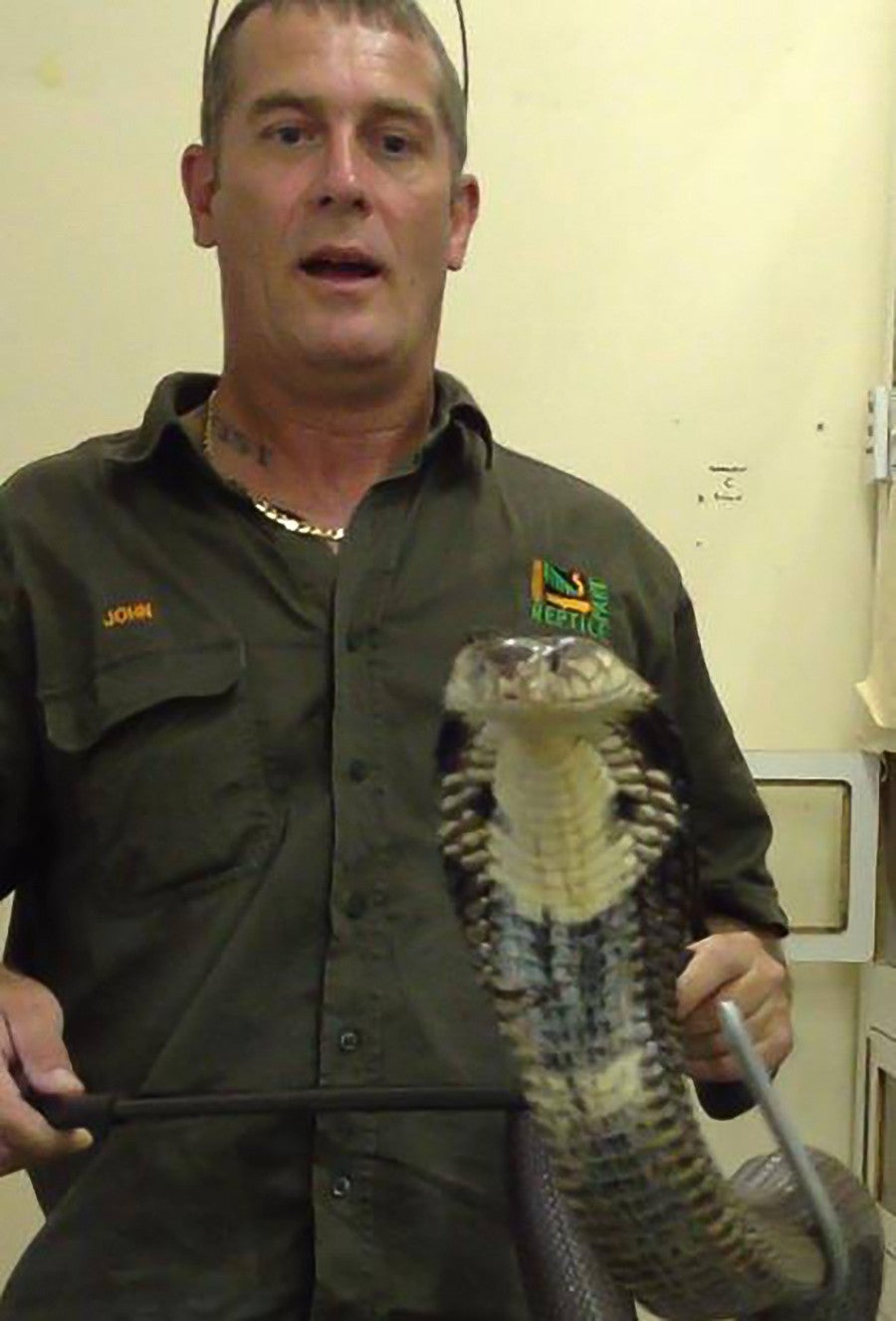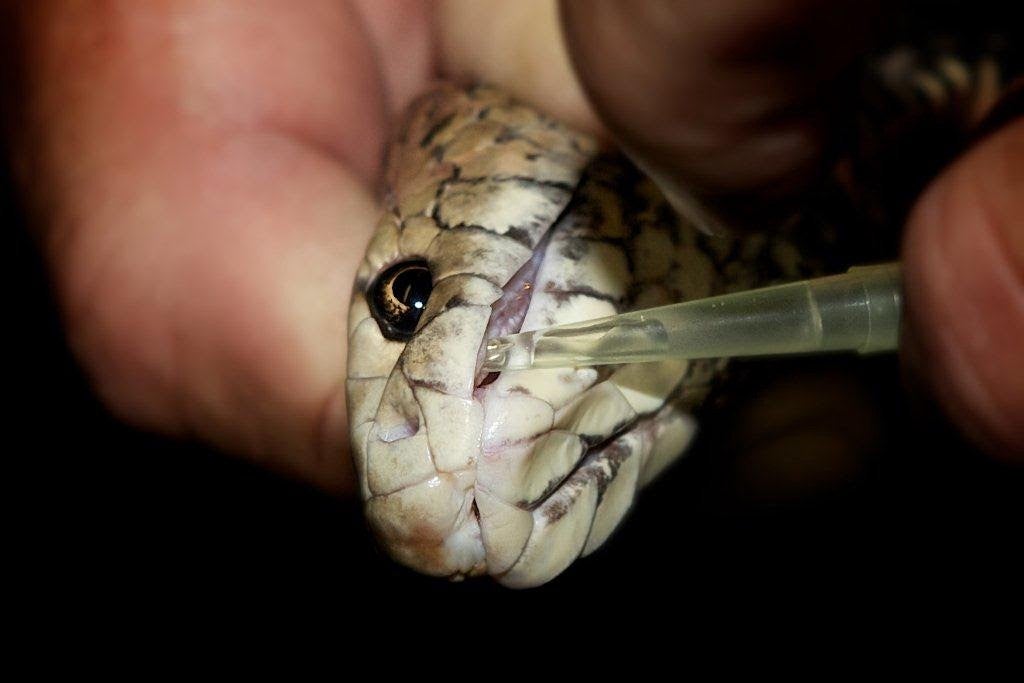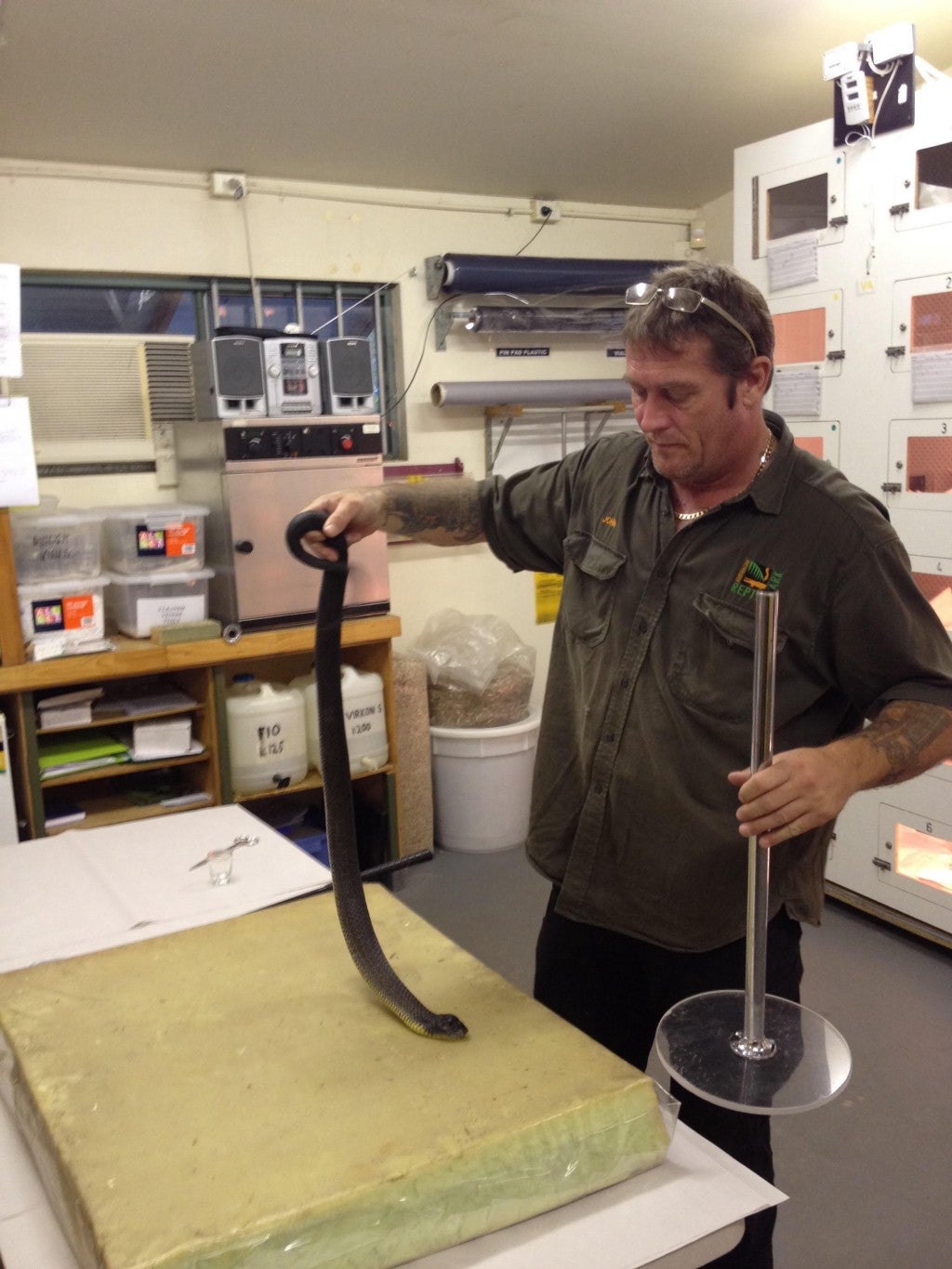In this week of excess, we’re covering gluttony in all its forms — from the traditional face-stuffing variety to people who can’t be regarded as anything other than a glutton for punishment. One of the best examples of the latter is 50-something Australian John Mostyn, who has spent a lifetime handling venomous snakes and more than two decades working with them professionally.
After suffering seven nasty bites during his years in the venom-extraction business, Mostyn now splits his time between rescuing snakes from people’s homes and trying to educate everyone else on their misguided fear of the creatures. Here’s why he keeps coming back for more, even though more, in his case, could kill him.

Snakes aren’t dangerous if you understand them. People think snakes are dangerous. But they’re not; they’re misunderstood creatures. If you understand their behavior and their biology, they’re a totally different kettle of fish.
We do a lot of rescues where people say, “If you don’t get here quickly, I’m going to take a shovel to it.” Well, if you take a shovel to a snake, you’re more than likely going to get bit. If you back off and leave the animal alone, he’s probably just going to go on his own way. If you terrorize or scare him, though, he’s going to defend himself, and if he does defend himself, you’re likely to sustain a serious bite.

But trust me when I say, snakes don’t want to bite us. Nor can they eat us. And they know it. All they’re usually doing is defending themselves. That said, their chemical capability is amazing. One drop of venom from an inland taipan can kill 120 grown men.
I’ve received two bites from coastal taipans. The first time was when I was removing one from the cage. He launched at me, and I felt something brush past my left hand. He landed on the floor so I went to hook him back up and put him in the cage. Before I could, though, he fled behind the bank of enclosures. I thought, Okay, I’ll just take a break for a minute. That’s when I looked down at my hand and saw two spots of blood. I put on a compression bandage and headed off to the hospital. Seven hours later, the doctors determined it was a non-venomous bite, and I was good to go home.
The second time I had the snake’s head in my right hand and a venom vial in my left. The snake bit the vial, released, bit the vial again, released, bit the vial again and released. After each bite, squirts of venom went into the vial. The fourth time, however, one of his fangs missed the vial and sunk into my left thumb. There was blood everywhere. Once again, I applied first aid and went to the hospital. And once again, it wasn’t an envenomation. It was a miracle really, because almost every coastal taipan bite is venomous.
I wasn’t as lucky the last time I was bitten. I was putting a rat in a tiger snake’s enclosure so he could eat. I moved my left hand across the front of the glass to secure the enclosure with the lock. That’s when the snake launched out of his hide box and punched the door open with his head. Next, he turned his head around the door, grabbed my index finger and thumb and pulled his head back into the enclosure.
I knew straight away it was going to be a bad bite. There was a lot of pain in my fingertips, a really bad burning sensation, and just touching my left hand lightly felt like somebody was hitting it with a hammer. When I got to the hospital, my creatine kinase levels were through the roof, and my blood clotting factors were way below half of what they should’ve been. I didn’t feel queasy until the doctor removed the bandage to reveal these red lines up my arm, which I guess had to do with my lymphatic system not functioning properly. That’s when the hit me with a second vial of anti-venom. Within 45 minutes, I felt a ton better. I stayed overnight in the ICU, but I was back at home the next day.

I had an angel watching over me making sure I didn’t get seriously sick from that bite. That doesn’t mean, though, I’m totally in the clear. Since that bite I’ve had kidney tests and stuff like that, and everything is fine. But there could be some longer lasting effect that I don’t know about as of yet.
I have a couple of friends who have been bitten by a tiger snake and they had to go on a kidney dialysis machine. Tiger snakes have a toxicity in their venom that dissolves the skeletal muscles — the muscle becomes a liquid. Your system uses the kidneys to filter it, and then your kidneys get clogged with liquid muscle. You can die of secondary kidney failure due to a snakebite, so these guys had to get a kidney-dialysis anywhere from three to nine months until their kidneys started to work again.
My mother got pretty upset. She said, “When are you going to stop doing this? You keep getting bitten. Let somebody else do it.” I told her, “Mum, it’s something I love doing.”

I’d be lying, though, if I said I didn’t start to reassess everything. Working in the venom-extraction industry is very dangerous. I was 51 at the time of the tiger snake bite, and I had a gut feeling that the next bite probably was either gonna kill me or knock me over. So I said that this was the time to bow out gracefully, and go back to still doing what I love doing, but in a different area.
Now, I impart my experiences and my knowledge and educate other people about these misunderstood creatures. I know in America, you have these rattlesnake roundups where they’re caught in the hundreds and killed. And what for? To make a pair of boots for somebody? If people understood more about these animals…
I’m sure that there is a cure for cancer in animal venoms or animal toxins. It just has to be discovered and put into practice.
I’m kind of like a pitbull that gets a hold of a bone and doesn’t want to let go. If I get something in my head that I want to do, hell or high water isn’t going to hold me back. I’m going to research it. I’m going to find out everything about it. And I’m going to go ahead and do it.
— As told to Nick Leftley

